To choose a representative of ancient Chinese beauty, Yang Guifei (杨贵妃/杨玉环, Yang Yuhuan) would probably be one of the most highly acclaimed candidates.
As one of the Four Beauties, her romantic legend with Emperor Xuanzong has been repeatedly sung, and anecdotes about the consort and written accounts of her appearance, as well as related paintings, operas, and theatrical stage performances, are commonplace. For thousands of years, literati and people have been curious about the beauty and makeup of the consort.
What is the real makeup style of Yang Guifei? If we only speculate from the descriptions of later texts, we may not get the real results. Aesthetics are always changing, and the benchmark for judgment is also changing.
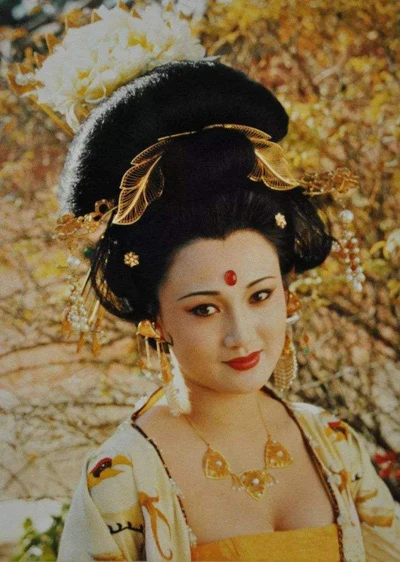
Yang Guifei look in modern cdrama
But large-scale archaeological excavations over the past half-century or so, especially the hundreds of realistic ceramic figurines, murals and silk paintings unearthed in the tombs of nobles during the Xuanzong era, have allowed us to scientifically summarize the aesthetic tendencies and changes in the figure and makeup of noblewomen during the decades of the Tang dynasty, Kaiyuan (开元), and Tianbao (天宝). Among them are many court paintings of Yang Guifei during her stay in the palace, which is generally available for reference and imagination.
Kaiyuan and Tianbao were almost the most rapid phase of fashion changes in the Tang dynasty, even to the extent that there was a change in three to five years. Let's take a look at the changes in the makeup of the noblewomen in the Kaiyuan and Tianbao eras of the Tang Dynasty, from light and simple to heavily red makeup.
01 The early years of Kaiyuan: simple and astringent
After the abdication of Empress Wu, the "Wu Zhou style" continued for more than a decade or two, until the reign of Emperor Xuanzong, changed to a simple and astringent style. This has a lot to do with the beginning of the reign of Emperor Xuanzong's incredible effort and frugality.
Emperor Xuanzong wanted to change the old vice of the court's pursuit of extravagance and splendor. After his accession, he issued several edicts and edicts, taking the lead personally to set an example by melting down the royal gold and silver, burning the jewels, jade, and brocade, and even ordering the previous brocade clothes to be dyed black, forbidding the weaving of magnificent fabrics, and stopping the abolition of official brocade weaving workshops.
Under the guidance of this general trend, women's make-up also changed its tendency to be gorgeous, with complex combinations of Ehuang (额黄, frontal yellow), Hua Dian (花钿, flower inlay), Xiehong (斜红, oblique red), Mian Ye (面靥), and hair bun with pendants being banned at least in the capital.
Yang Yuhuan was born in the seventh year of Kaiyuan (719 A.D.) and spent her early childhood in Shu, so the female makeup she saw as a teenager was probably still primarily simple and sharp.
From the tomb murals, line engravings, and terracotta figurines of that time, the clothing and headdress of women in the early Kaiyuan period were simple, without too strong and complex makeup, in a relatively fresh and elegant style.
Without red makeup and decorations, with slender eyebrows, the hair on the temples was relatively obedient, occasionally seen in a high bun, but more often in a small bun tied around the top of the head.
For example, in the mural painting of Lady Qibi's tomb in Liquan, Shaanxi Province, in the ninth year of the Kaiyuan era (721 A.D.), the simple and unadorned hairstyle is seen, the makeup is only lightly applied, and the eyebrows are relatively slender and soft.
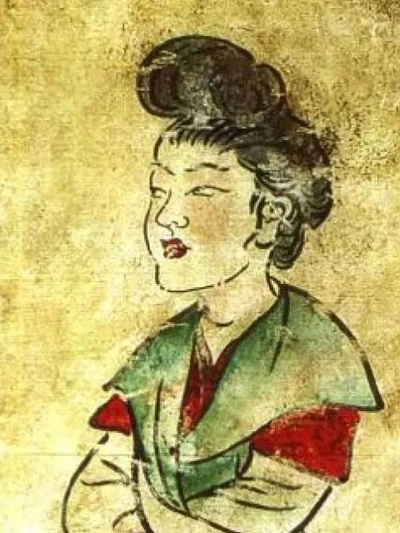
mural painting of Lady Qibi's tomb
However, there are some exceptions, such as the stone coffin line engraving of the tomb of Xue Jing in Wanrong, Shanxi (721 A.D.), which depicts several noblewomen with flower inlay painted on their foreheads and flower decorations on their buns. Perhaps the laxity of the ban in some areas outside the capital was the reason.
Under the rule of Emperor Xuanzong and a group of good ministers, the Tang Dynasty entered into the glorious Kaiyuan heyday. Of course, the royal family was impossible to get rid of the luxury forever, and soon the palace makeup fashion made a comeback.
02 Entering the Luoyang: the formation of the exquisite "Kaiyuan-like."
In the 17th year of Kaiyuan (729 A.D.), Yang Yuhuan came to live with her third uncle Yang Xuangui in Luoyang when her father died.
In July of the 22nd year of Kaiyuan, Princess Xiangyi (Daughter of Emperor Xuanzong) was married in Luoyang, and Yang Yuhuan was invited to attend. The princess's younger brother, Li Mao (Prince of Shou), fell in love with Yang Yuhuan at first sight, and Emperor Tang Xuanzong appointed Yang Yuhuan as Princess Shou.
At this time, still in the second decade under the rule of Emperor Xuanzong, Chang'an, Luoyang revered fashion and makeup, had been completely removed from the legacy of the Wu Zhou, and the early years of the sense of simplicity, gradually formed a new "Kaiyuan-like", to exaggerate and refine the development. Makeup color tone generally maintains a light and elegant style, with white makeup and light thin red rouge being the main.
Yuwen Shi's "Zhuang Tai Ji (妆台记)" mentioned: First, apply a layer of white powder on the face, and then evenly distribute the red rouge water in the palm, applied on both cheeks. Light as a peach blossom called "peach blossom makeup"; if a layer of white powder on top of the light rouge, white faintly transparent hazy red shadow, called "Fei Xia (飞霞) makeup."
At the same time, exquisite and gorgeous makeup is gradually popular again, the face of the flower ornaments increased, frontal yellow, oblique red, and other full sets of makeup reappeared.
Typical examples such as the Astana cemetery in Xinjiang unearthed a mid-Kaiyuan women's screen painting, nine women can be identified, curved eyebrows, face are depicted with two oblique red, and the forehead flower decorations are different.
Yang Yuhuan, who was in Luoyang, probably similarly saw noblewomen with their bulging sideburns and low buns, delicate and soft makeup, flowered dresses, and increasingly chubby figures.
03 Entering the palace: the era of heavy red makeup
In the 25th year of the reign of Kaiyuan (737 A.D.), Empress Zhenshun died, and Emperor Xuanzong was depressed. A minister advised that Yang Yuhuan is plump, has skin like gelatin, natural beauty, and is suitable for the harem. So, Yang Yuhuan was called to the harem.
In the fourth year of Tianbao (745 A.D.), after Emperor Xuanzong named Wei Zhaoxun's daughter as Princess Shou, Yang Yuhuan, who was originally his daughter-in-law, was named as a noble consort (贵妃, Guifei). Since no empress was established at that time, the status of Yang Guifei was equivalent to that of an empress.
Emperor Xuanzong felt that the country was stable and strong and gradually forgot the original frugality vow. Later, he handed over the state affairs to Li Linfu and Yang Guozhong, and gradually became lavish, and he and Yang Guifei spent a luxurious time in the palace.
Either because Emperor Xuanzong, Yang Guifei, and other royal family's personal preferences change, or because of the economic basis of the peace and prosperity of the rich and comfortable, strong national power, resulting in the development of the social culture to advocate the rich and extravagant.
The noblewomen's bodies became rich, the more intense and exaggerated aesthetic, and gradually into the "red makeup era". At this time, the bun of the court noblewoman was more relaxed, with a huge hair bag dragging down behind the head, gathered and converged at the top to form a small bun or two, which is the iconic hairstyle of "Tianbao-like", and decorated with flower inlay. And loose clothing, a wide long skirt bundled on the chest, the hemline is dragging the ground, patterned with flowers.
There were also some bold changes in the makeup. The most striking feature is the "red makeup" with a large heavy rouge applied to the entire cheeks, spreading from under the eyebrows to the ear sockets and corners of the face, leaving only the forehead, nose, and chin white, the extent is quite exaggerated.
These features have already emerged in the painted line carvings and murals, and terracotta figurines in the tomb of Empress Zhenshun. Many of the courtesans in the murals have large areas of rouge applied to their faces.
Subsequently, in the Tianbao period, a large number of court and noble burial murals and terracotta figurines of women, makeup is based on a large area of red makeup, between the forehead depicts a variety of frontal yellow and flower inlay, with a full face, full of visual impact.
In ancient China, red makeup varies in intensity, but in the Tang Dynasty, such large areas of red makeup, maybe the most intense one. From the "Zhuang Tai Ji" in the record, the strongest degree may be called "Jiu Yun (酒晕, wine halo) makeup", after the white powder base, and then apply heavy rouge on the cheeks, as the face flushed with red when drunk.
The Tang Dynasty was a prosperous dynasty of openness and romance. And the makeup style in Tang flourishing period, strong national power, and the ruler's attention are inseparable. Because of the ruler's attention provides the opportunity for women's makeup materials to be recorded, collected, and passed on to the future.
![]()
Reference content selected from "The Beauty of Chinese Makeup (中国妆容之美)"
More about the makeup of different dynasties in ancient China:
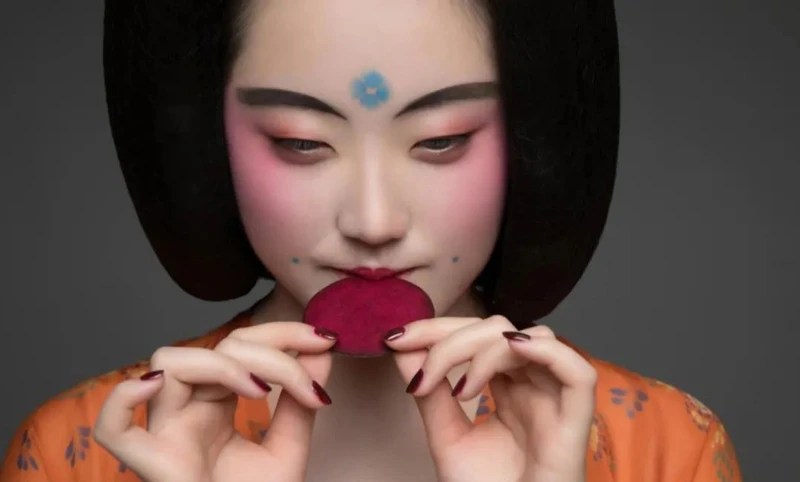
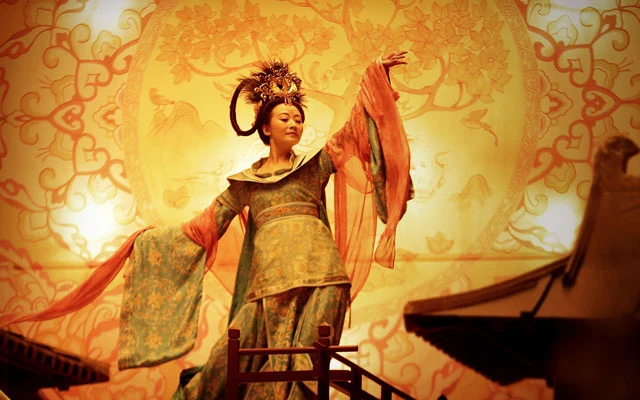
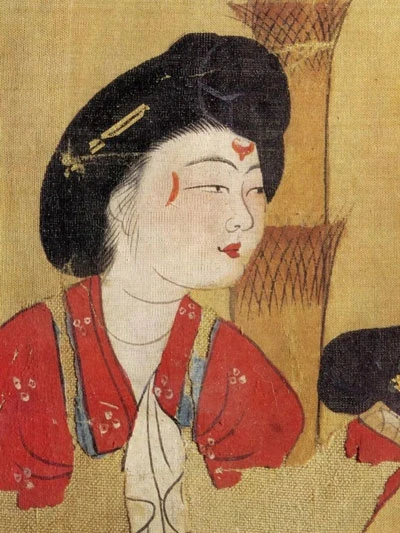
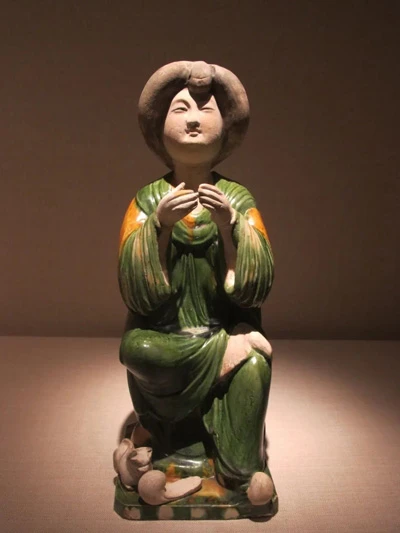
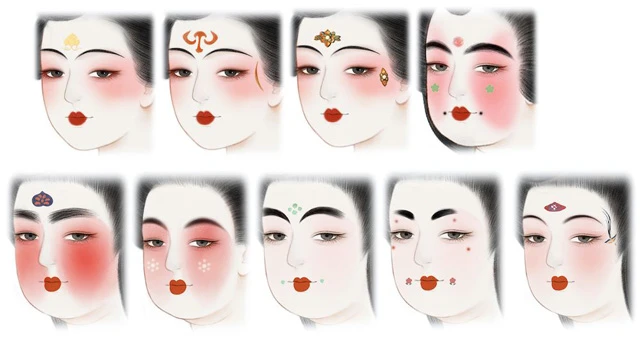
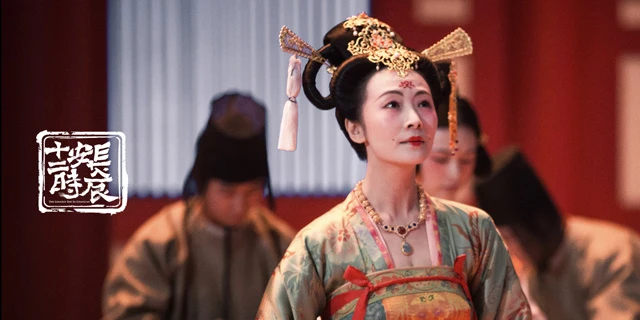
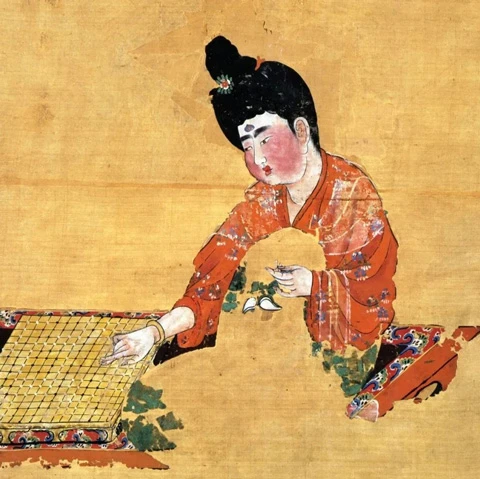
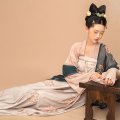
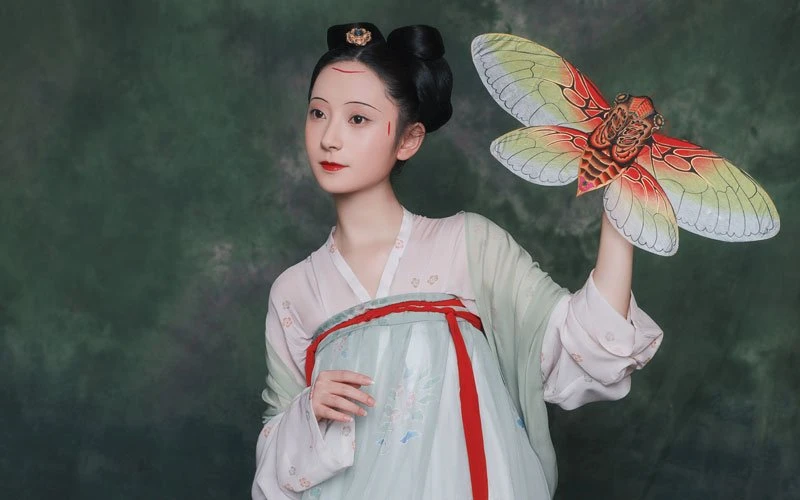

I guess trends always come back at some point in time 😂
Such interesting changes...
Make up yang bagus